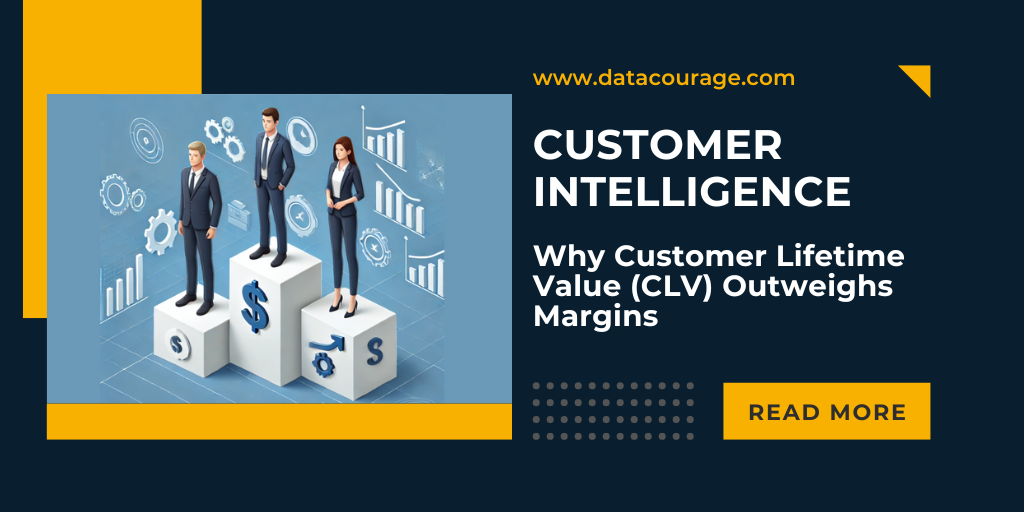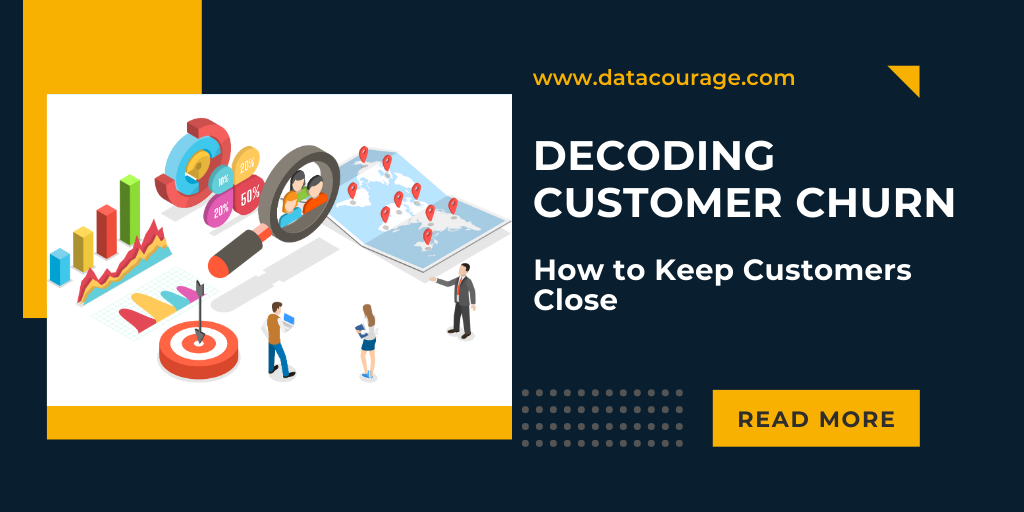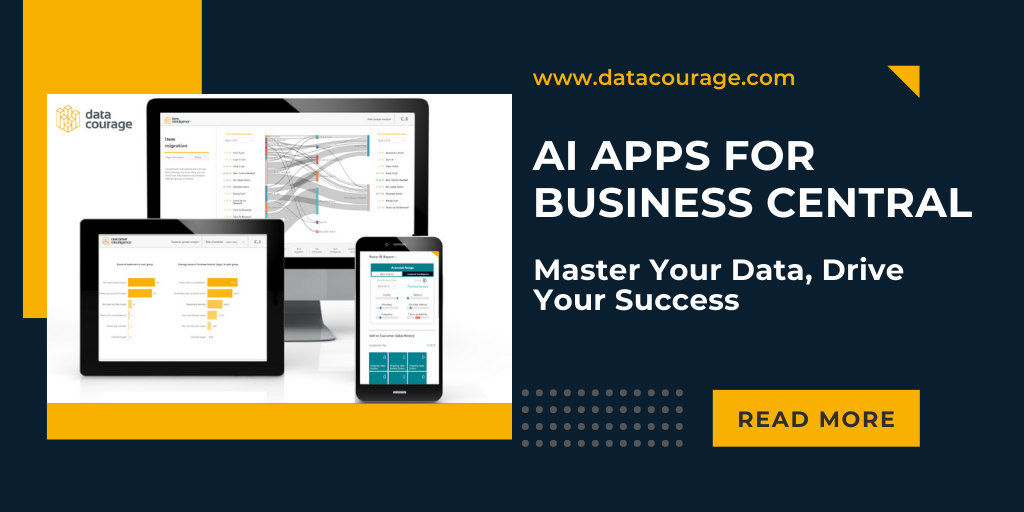Decoding Customer Churn
One challenge that keeps leaders awake at night is customer churn. Picture this: a loyal customer, once a regular and enthusiastic patron of a brand,...

It's easy to get caught up in the allure of immediate profits. Margins, after all, are a straightforward metric: they tell you how much money you're making on each sale after accounting for costs. But...
...focusing solely on margins can lead to a short-sighted strategy that overlooks the long-term potential of your customers. This is where Customer Lifetime Value (CLV) comes into play—a more complex, but ultimately more rewarding metric that helps businesses understand the true value of their customers over time.
Calculating margin is relatively simple. It’s a straightforward formula where you subtract your cost of goods sold (COGS) from your revenue, and then divide by revenue to get a percentage. This metric gives you a clear snapshot of how much profit you're making per transaction. It’s an essential figure for managing day-to-day operations and ensuring that your pricing strategy is sound.
However, while margins provide an immediate view of profitability, they don't tell the whole story. A high margin on a one-time sale might look great on paper, but what if that customer never returns? On the flip side, a lower margin sale that brings a customer back repeatedly can generate far more value over time.
Customer Lifetime Value, or CLV, is a metric that predicts the total revenue a business can expect from a single customer throughout their relationship with the company. Unlike margin, which is easy to calculate and understand, CLV requires a deeper analysis of customer behavior, purchasing patterns, and retention rates.
Calculating CLV involves several factors. It’s not a number you can pull out of a basic financial statement. Instead, it requires a more sophisticated approach, involving advanced data analysis and predictive modeling.
This complexity is precisely what makes CLV so powerful. While margin tells you about the profitability of individual transactions, CLV provides a holistic view of customer value, allowing businesses to make more informed decisions about marketing, customer service, and retention strategies.
| Aspect | Margin | Customer Lifetime Value (CLV) |
| Definition | The percentage of profit made on a single transaction after costs. | The total revenue a business expects to earn from a customer over the entire relationship. |
| Calculation Complexity | Simple: Calculated by subtracting cost from revenue and dividing by revenue. | Complex: Involves average purchase value, purchase frequency, customer lifespan, and profit margins. |
| Focus | Short-term, transactional view of profitability. | Long-term, holistic view of customer value. |
| Metric Type | Transactional, focused on individual sales. | Predictive, focused on future value. |
| Impact on Strategy | Encourages immediate profitability, may lead to short-term focus. | Encourages investment in customer loyalty and retention strategies. |
| Application | Useful for pricing strategies and managing day-to-day operations. | Useful for customer segmentation, marketing, and retention planning. |
| Ease of Access | Easily accessible from standard financial reports. | Requires advanced data analysis and predictive modeling, often through specialized tools. |
| Key Benefit | Provides a quick snapshot of profitability per sale. | Offers a comprehensive view of customer potential and long-term profitability. |
| Decision-Making | Often leads to decisions focused on increasing individual transaction profits. | Leads to decisions focused on maximizing long-term customer relationships and loyalty. |
| Risk | Can lead to neglecting customer retention and lifetime value. | More complex to calculate, but provides deeper insights into customer value. |
Focusing on CLV rather than short-term margins allows businesses to adopt a more customer-centric approach. By understanding the long-term value of a customer, companies can invest in strategies that increase customer loyalty, improve retention, and ultimately drive more sustainable growth.
For example, consider a scenario where a company decides to invest in a loyalty program that lowers their immediate margin on sales. At first glance, this might seem counterproductive. However, if this program significantly increases the frequency of repeat purchases, the overall CLV of customers will rise, leading to higher long-term profitability.
Moreover, understanding CLV can help businesses identify which customers are worth the most investment. By segmenting customers based on their lifetime value, companies can tailor their marketing and customer service efforts to maximize returns. This is particularly important in industries where acquiring new customers is expensive.
For businesses using Microsoft Business Central, calculating CLV might seem like a daunting task due to its complexity. Fortunately, solutions like the AI Customer Intelligence app make this process much more manageable. This app, designed specifically for Business Central, leverages AI to calculate CLV in seconds, providing businesses with valuable insights without the need for complex data analysis.
With this tool, businesses can integrate CLV calculations directly into their existing Business Central workflows. This seamless integration allows for real-time analysis and decision-making, ensuring that companies can quickly adapt their strategies based on the latest customer data.
Identify High-Value Customers: Start calculating CLV to quickly determine which customers drive the most value, enabling better decision-making.
Optimize Marketing Spend: Use CLV insights to allocate your marketing budget more effectively, focusing on channels that attract the most profitable customers.
Enhance Customer Loyalty: Develop targeted retention strategies now to reduce churn and increase long-term profitability.
Stay Competitive: With more businesses focusing on customer lifetime value, calculating CLV today ensures you remain ahead in customer engagement and retention.
Prepare for Long-Term Growth: By understanding and leveraging CLV, you can build a strong foundation for sustained, scalable growth.
In conclusion, while margins are an important metric for day-to-day business operations, they only provide a partial view of your company’s financial health. Customer Lifetime Value, though more complex, offers a more comprehensive understanding of your customers and their long-term value to your business.
By prioritizing CLV over short-term margins, businesses can build stronger, more profitable customer relationships and drive sustainable growth. And with tools like the AI Customer Intelligence app for Business Central, calculating and leveraging CLV has never been easier. In today's competitive market, understanding and maximizing your CLV can be the key to long-term success.
By shifting your focus from the simplicity of margins to the richness of CLV, you not only gain a deeper understanding of your customers but also unlock new opportunities for growth and profitability.

One challenge that keeps leaders awake at night is customer churn. Picture this: a loyal customer, once a regular and enthusiastic patron of a brand,...

Gaining deep insights into customer behavior and product performance has always been a critical factor for staying ahead of the competition. But the...

What if AI could help predict top-selling products, minimize stock shortages, and increase customer loyalty—all while optimizing operations?

One challenge that keeps leaders awake at night is customer churn. Picture this: a loyal customer, once a regular and enthusiastic patron of a brand,...

Gaining deep insights into customer behavior and product performance has always been a critical factor for staying ahead of the competition. But the...

What if AI could help predict top-selling products, minimize stock shortages, and increase customer loyalty—all while optimizing operations?